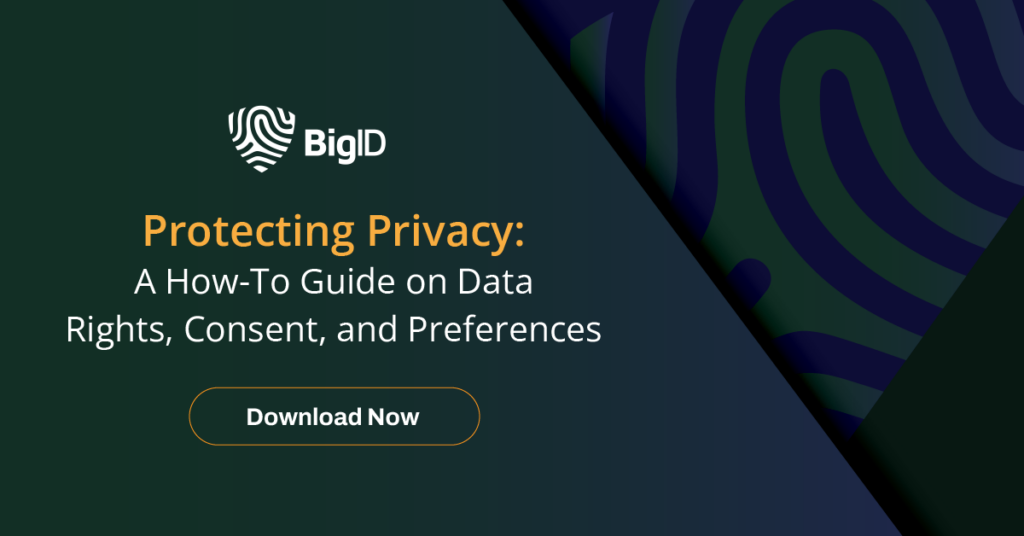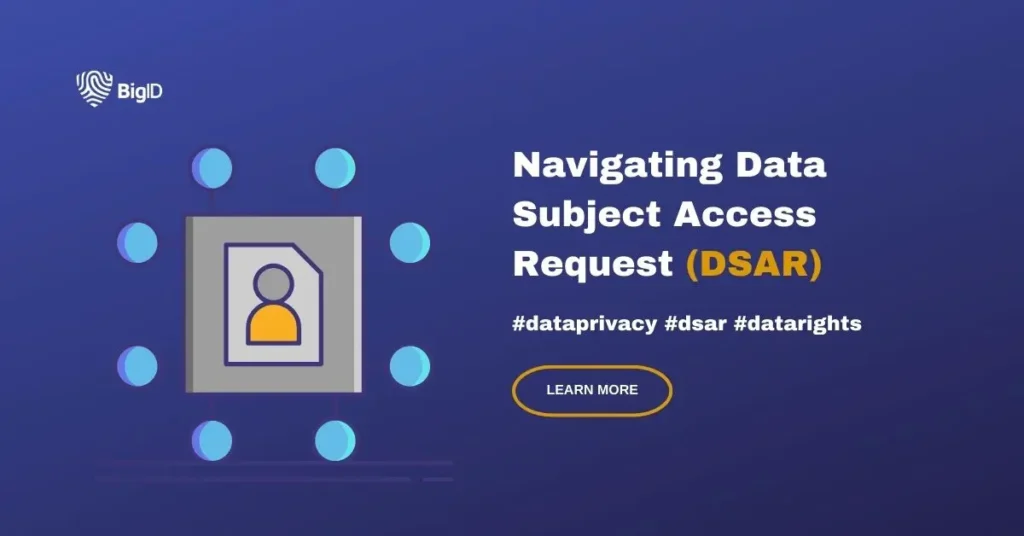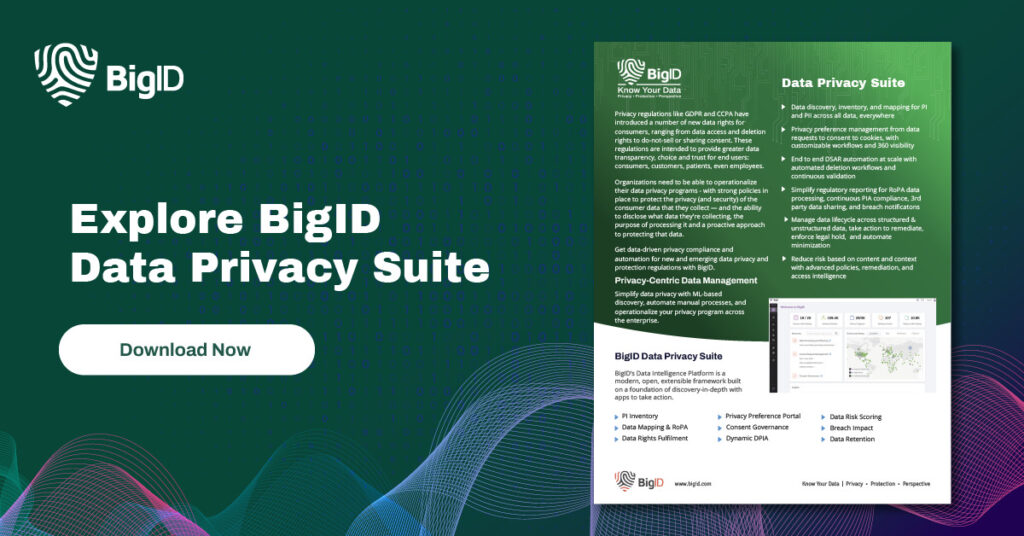Understanding Data Subject Access Request
In the world we live in today, protecting personal data is important. Data privacy laws prioritize transparency and control over the consumers’ information. DSARs – Data Subject Access Requests – play a very important part in maintaining privacy and compliance.
In a recent survey conducted by EY, 60% of professionals reported an increase in DSARs over the past year. Just over half (51%) of the respondents said they received complaints from data subjects about how their requests were handled.
So, how can your organization manage these subject requests and ensure regulatory compliance?
What is DSAR?
Data Subject Access Request is a way of giving individuals ownership of their personal information under data privacy regulations like GDPR (General Data Protection Regulation) and CCPA (California Consumer Privacy Act). Essentially, these regulations give individuals the right to access and control their personal data held by organizations. This includes the right to erasure of some of their information and the right to be forgotten, where they request that all their collected information be deleted.
Who Can Submit a DSAR Request?
Any individual whose personal data is held by an organization can submit a data subject request. This includes customers, employees, patients, students, and others. The request can also be made by an authorized third party on behalf of the data subject.
Submitting a Data Subject Request
To submit a DSAR request, an individual typically has to provide their name, contact information, and details about the information they are requesting. This may include specific documents or data points, or a general request for all personal data held by the organization.
Responding to a DSAR
Once a DSAR request has been submitted, the organization needs to respond in a timely and accurate manner, providing the individual with a copy of their personal data in a structured, commonly used, and machine-readable format. This may include information such as an individual’s name, address, date of birth, contact information, financial information, employment history, and any other personal data the organization holds.
Businesses are also required to provide individuals with additional information about how their personal data is being processed. This often takes the form of a data summary, which outlines the purposes of processing, the categories of personal data involved, and any third parties with whom the data may be shared.
Refusing to Respond to a DSAR
You can refuse to respond to a DSAR if the request is unfounded or excessive. That includes situations where the subject is using the right of access to their information to harass you. If the requests are repetitive, where there isn’t a reasonable interval between requests or justification, you can refuse to respond to a DSAR request.

DSAR Fulfillment: Managing DSAR Responses for Data Privacy Compliance
Effective DSAR management is about more than just ticking boxes on a compliance checklist. It’s about instilling a culture of respect for data rights, accountability for data stewardship, and transparency in data practices.
DSAR requests can come in various forms – from a simple email to a formal written request. Regardless of the format, your organization must be prepared to handle these requests efficiently and transparently. This requires establishing clear procedures to ensure prompt and transparent handling, regardless of the request format. While specific requirements may vary depending on regulatory jurisdiction and your industry, certain common principles can guide you in your approach.
Build Robust DSAR Response Processes
Effective DSAR management begins with laying down robust processes and systems. It’s about creating a structured framework that guides every step of the DSAR journey, from request initiation to response delivery. This framework should be flexible enough to adapt to varying requests while ensuring consistency and compliance at every turn.
Develop comprehensive DSAR policies outlining the procedures for submitting requests, timelines for response, and mechanisms for verifying the identity of the requester. These policies should be easily accessible to individuals and clearly communicated to employees responsible for handling DSARs.
Consider Vertical-Specific Requirements
While the fundamental principles of DSAR management apply across industries, certain verticals have specific regulatory requirements or industry standards. For example, if you’re a healthcare company, you would have to comply with additional data protection regulations such as HIPAA (Health Insurance Portability and Accountability Act).
Designate Responsible Personnel (Like A Data Protection Officer)
Behind every successful DSAR process is a team of dedicated individuals who understand the intricacies of data protection and privacy. Make these people responsible for managing subject rights. Assign specific individuals or teams to oversee DSARs to ensure accountability and consistency in handling requests. These data protection officers (DPO) should be trained in data protection regulations and given the tools necessary to manage requests effectively.
Verify the Identity of Those Who Request Access
Implement robust data access procedures to prevent unauthorized access and safeguard sensitive information. This includes establishing secure authentication measures, encryption protocols, and access controls to ensure only authorized personnel can handle and access requested data. And, this right to access should be evaluated periodically to minimize unfounded or excessive access permissions.
The data subject’s identity should also be authenticated to prevent the wrong person from accessing another’s sensitive personal information. Depending on the nature of the request and applicable regulations, you may require requesters to provide proof of identity before processing their DSARs.
Adhere to Regulatory Timelines
Different jurisdictions may have their own timelines for responding to DSARs. For example, GDPR compliance requires responding to DSARs within one month, with the possibility of an extension in certain circumstances. You should familiarize yourself with the specific requirements of the privacy regulations that apply to your business and ensure timely compliance.
Providing Clear Guidance to Individuals
Individuals have the right to access their personal data, but they need clear guidance on exercising this right effectively. Provide individuals with accessible and understandable information on how to submit a request, what should be included in a DSAR, what to expect during the process, and how their data will be handled and protected.
Maintain Detailed Records
Keep a detailed log of all DSARs you’ve received and processed, including the date of receipt, nature of the request, actions taken, and any communications with the requester. This documentation helps you stay compliant with regulatory requirements and enables you to track and monitor your DSAR processes effectively.
How Quickly Should You Respond to the DSAR?
Regulations such as the GDPR and the CCPA establish clear guidelines and standards for managing DSARs, including stringent timelines for response and protocols for providing access to requested data.
Under the GDPR, you must respond to a DSAR within one month of receipt, although you can get an extension under certain circumstances. If you refuse to respond to comply with these timelines, you will face severe penalties, including fines of up to €20 million or 4% of the your global annual revenue, whichever is higher.
Similarly, the CCPA grants consumers in California the right to request access to their personal information held by businesses. If you’re subject to the CCPA, you must respond to DSARs within 45 days, with additional provisions for extending the deadline under certain circumstances.
Streamlining the DSAR Process: The Path to Efficiency
Create a streamlined process to optimize the workflow from when the subjects submit the request to when the request is fulfilled. By automating repetitive tasks and standardizing procedures, you can significantly enhance efficiency and minimize the risk of errors. Here’s a simple step-by-step guide on how to streamline DSAR workflows effectively:
- Identify Key Tasks: Identify the main data processing tasks involved in handling DSARs, such as verifying the identity of the requester, retrieving requested data, redacting sensitive information, and communicating responses.
- Map Out the Workflow: Create a visual map of the workflow, outlining each step from request initiation to response delivery. This will help identify bottlenecks and inefficiencies that can be addressed through automation.
- Implement Automation Tools: Invest in automation tools and DSAR software solutions. These tools can automate repetitive tasks, such as data retrieval and redaction, streamlining the process and reducing the manual workload.
- Standardize Procedures: Develop procedures and protocols for handling DSARs to ensure consistency and accuracy in every response. Clearly define roles and responsibilities within the organization to facilitate seamless collaboration and communication.
- Integrate Systems: Connect DSAR management systems with existing data stores and IT infrastructure to streamline data retrieval and access. This eliminates the need for manual data searches across multiple platforms, saving time and reducing the risk of errors.
- Utilize Templates and Predefined Responses: Boilerplate responses for common DSAR scenarios help speed up the process. These templates can be customized as needed to address specific requests while maintaining compliance with regulatory requirements.
- Monitor and Evaluate Performance: Regularly assess the performance of your workflow to identify areas for further improvement. Collect feedback from stakeholders and incorporate suggestions for optimizing efficiency and effectiveness.
Follow these steps and leverage automation tools to streamline DSAR processes to achieve greater efficiency, reduce the risk of errors, and ensure timely responses to a data subject’s requests. Stay compliant with regulatory requirements and foster trust and transparency with your consumers.
The Importance of Data Subject Rights
Data Subject Access Request transparency is crucial for organizations because it directly impacts customer loyalty and trust in the following ways:
- Data Privacy Compliance: Demonstrating transparency in handling DSARs indicates that the organization takes data privacy seriously and complies with relevant data protection laws. Customers are more likely to trust a company that respects their rights and follows legal requirements.
- Empowering Customers: Providing a clear and accessible process for customers to request and receive their personal data, organizations empower customers to have greater control over their information. This transparency shows respect for customer rights and fosters trust.
- Data Security and Trust: Transparent handling of DSARs assures customers that their data is secure and not misused. This trust is essential for maintaining a positive relationship with customers who expect their data to be handled responsibly.
- Brand Reputation: Companies known for their commitment to data transparency and privacy are likely to have a stronger brand reputation. Positive public perception and trust can contribute to customer loyalty.
- Competitive Advantage: In a world where data privacy is a growing concern, organizations that excel in DSAR transparency can gain a competitive edge. Customers may choose to do business with companies that are more respectful of their privacy rights.
- Customer Retention: When customers feel that their data is handled transparently and securely, they are more likely to stay loyal to the organization. A positive experience with DSARs can lead to long-term customer relationships.
- Reduced Risk of Legal Issues: By handling DSARs transparently and in compliance with regulations, organizations reduce the risk of legal actions and fines. This, in turn, can protect their reputation and customer trust.
Automate DSAR Processes With AI
As the volume of DSAR requests grows, organizations are turning to automation solutions powered by AI to streamline their processes further. These solutions can help with tasks such as identifying relevant data, redacting sensitive information, and even predicting potential DSARs based on historical data patterns.
Of course, while AI offers opportunities for efficiency and accuracy in DSAR management, it also raises important ethical considerations. AI-driven solutions must prioritize data privacy and transparency. You must ensure that your automated DSAR solution mitigates the risk of algorithmic bias and protects individuals’ rights.
BigID’s Approach to Empowering Data Transparency with DSARs
BigID is the industry-leading platform for data privacy, security, and governance — offering deep data discovery and next-gen AI and ML for total visibility and control across the multi and hybrid cloud.
Here’s how BigID can help with DSARs:
- Identify, Classify, and Know Your Data: BigID’s data discovery foundation uncovers all structured and unstructured data, on-prem or in the cloud, with multiple connectors. Get quicker data inventory, mapping, and classifying across your entire data ecosystem — with greater insight and context.
- Automate Data Rights Fulfillment: From access to deletion— dynamically manage DSARs at scale with streamlined deletion workflows and compliance reporting.
- Leverage Risk Scoring: Risk-based scores on a variety of data parameters like data type and location, providing a risk-centric view of data so your business can be proactive about reducing risk.
Start saving time, manual effort, and ensure full compliance with your DSARs., get a 1:1 demo with BigID today.



